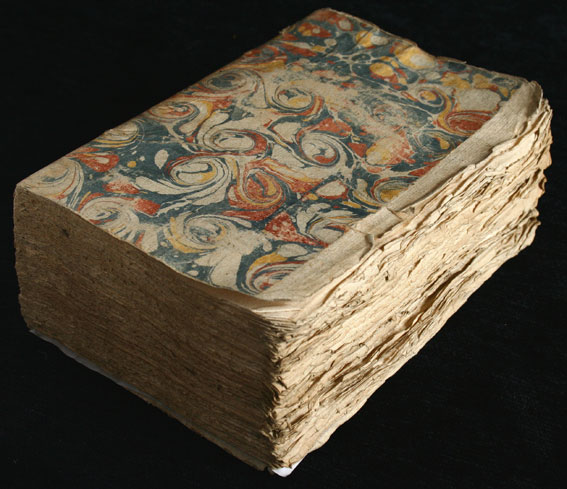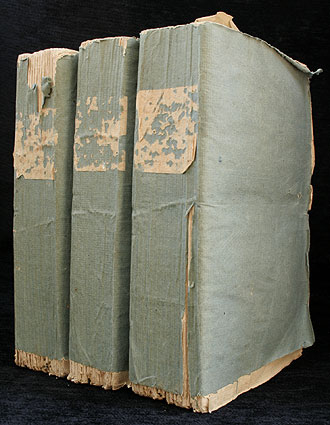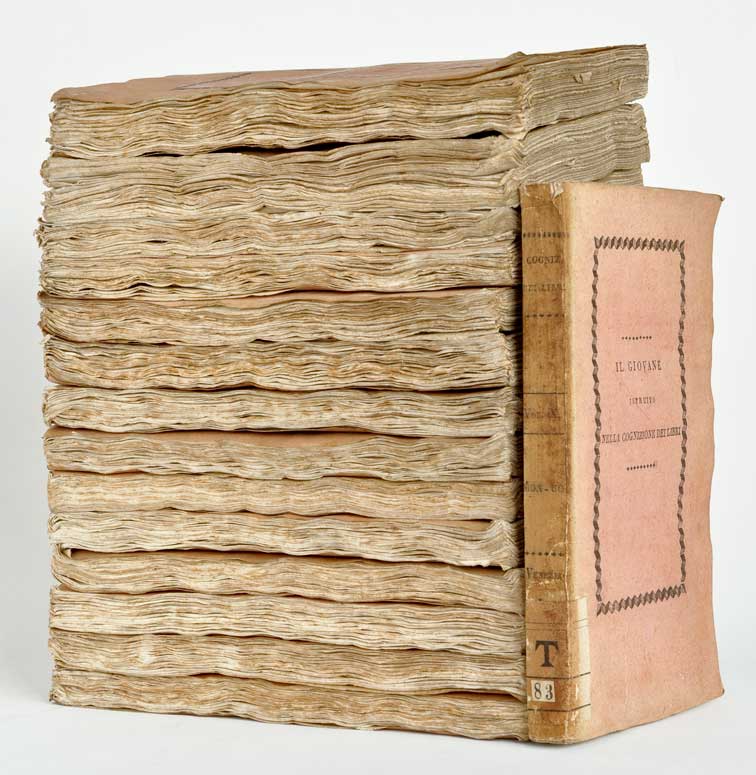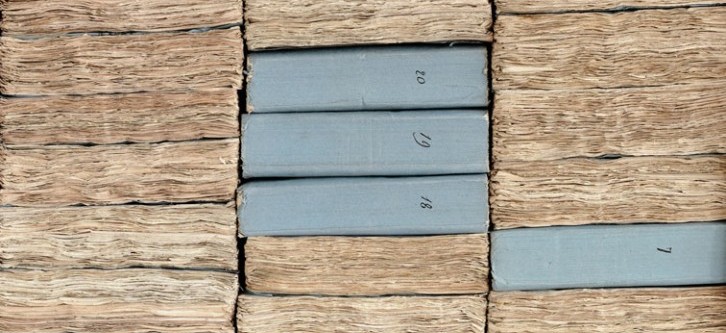‘Deckle edges’ are the rough, untrimmed edges of a sheet of handmade paper (the deckle, from the German Deckel, ‘little cover,’ being the thin wooden frame around the mould on which the pulp is placed). John Carter’s ABC for Book Collectors notes that deckle edges are ‘much prized by collectors, especially in books before the age of edition-binding in cloth, as tangible evidence that the leaves are uncut; for the deckle edge normally would be—and indeed was meant to be—trimmed off by the binder.’ I should note here the distinction made by booksellers between the terms ‘uncut’ (or ‘untrimmed’), which means the deckle edges have not been cut off, and ‘unopened,’ which is used to describe a book where the conjoined leaves of a gathering have not been cut open with a paper knife, in preparation for reading.

Carter has a separate entry for ‘deckle-fetishism,’ which he defines as ‘the over-zealous, undiscriminating (and often very expensive) passion for uncut edges in books which were intended to have their edges cut.’ Collectors (and, naturally, booksellers) have always particularly prized copies with ample margins. Size often does matter when comparing copies of books from the hand-press period.

Deckle-fetishism seems to be a peculiarly Anglo-American affliction. I know French and Italian collectors, for example, who would prefer a book to be in a contemporary binding, rather than having it uncut in the original printed wrappers. Each to their own. Of course, one could argue that a well-preserved uncut book is liable to be a book which has never been read, a copy of a text which has defeated the object for which it was created. This is probably true. And yet, and yet...

For me, as a bookseller, it’s a case of hearts and minds: when I see an uncut book, especially one in more than one volume, my heart leaps. ‘What a lovely copy! As original as it could possibly be. How amazing that it’s managed to survive all these years in that state. Just beautiful.’ Then my mind kicks in: ‘That book is going to be pain to collate. It’ll take much longer than a set which has been trimmed. How irritating.’ But do you know what? The heart wins every time.

With thanks to Justin Croft Antiquarian Books for supplying the images.
-----
Notes
Learn more about the terms and jargon used in the antiquarian book business in our abbreviated glossary of common terms....
Two useful resources about rare books, and the practical matters involved in publishing and book-binding are:

The Encyclopedia of the Book by Geoffrey Glaister

ABC for Book Collectors by John Carter








